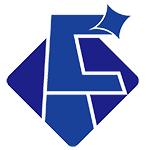According to the Global Market Insights report, the Market value of automotive glass is expected to exceed 14.96 billion yuan in 2026, with a growth rate of 7.5%. The surging production and sales of new electric vehicles will boost the Market share of the industry.
Frontier trend
Consumers prefer to use lightweight vehicle parts to save weight and improve fuel efficiency, which in turn increases revenue in the automotive glass market.
Automakers emphasize the rational use of acoustic windshields to provide a noiseless travel experience.
Intelligent glass with electron-tinted properties provides insulation by using an intermediate film layer.
With the reduction of production cost, increasing quality control measures is the driving factor of vehicle modularization.
Asian countries such as India, China and Thailand have abundant resources to manufacture and assemble vehicles, which is one of the main reasons for the growth of the market.
As a result of changing lifestyles and preferences for long distance travel, vehicle performance continues to evolve, and a greater preference for laminated side window glazing will continue to enhance product development activities. Oems focus on standardized window glazing. Growth in automotive production in the asia-pacific region, mainly China, Indonesia, Japan, India, Malaysia and Taiwan, is expected to drive demand for automotive glass.
Laminated glass has many benefits, such as improved impact and scratch resistance, higher durability and uv resistance that will drive the size of the automotive glass market. Some common glass types with added value include defogging glass, insulating glass, etc. Acoustic glass helps reduce traffic noise, creating a pleasant and comfortable journey, and laminated glass can increase sound insulation. De-fogging glass helps remove condensation and ice, providing clear visibility in all weather conditions.
Post time: Dec-11-2019

